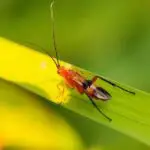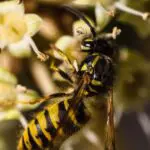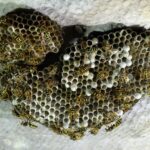Are Mason Wasps Dangerous?
Generally, mason wasps are harmless insects. However, there are certain species that can cause a significant threat to humans and their property. In addition, they are invasive and pose a danger to human health. While most people find stings to be painful, they are not fatal. In fact, most people only experience stings temporarily.
Mason wasps are members of the insect family Vespidae. They evolved to take advantage of natural voids and galleries created by carpenter bees and wood-boring beetles. They build nests in hollow tubes, pipe stems, and plant stems. These nests have a food source for the larvae. The larvae feed on caterpillars, spiders, and other insects. The adult wasps feed on nectar from flowers, and devil’s darning needles.
The Four-tooth Mason Wasp is an insect that is widely distributed in North America. They have been known to range from southern Ontario to northern Mexico. Their habitat is fairly diverse, as they live in plants throughout the eastern U.S. They are often mistaken for bald-faced hornets, but they are very different creatures.
Four-tooth mason wasps are relatively non-aggressive, but they are capable of stinging if they are grabbed. Their sting is similar to the sting of a bald-faced hornet. They are considered “Insects to be Handled with Caution”. They have been recorded from southern Ontario to northern Mexico.
Another species of mason wasp is the Coarse-backed Red Paper wasp. This wasp is found across the United States, and prefers to nest in hollow trees and buildings. It is red in color, and has no yellow markings.








